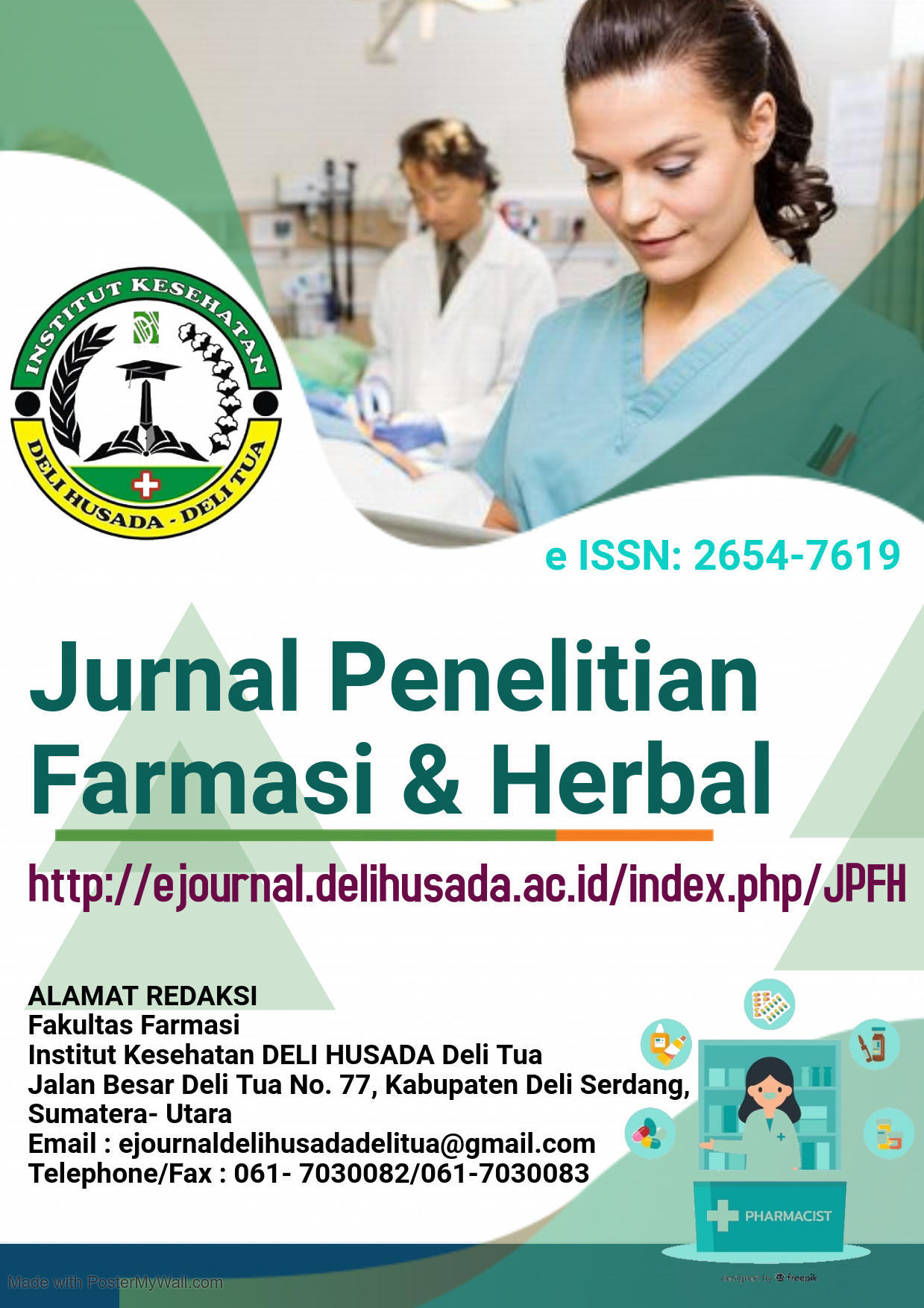STUDI FARMAKOVIGILANS PADA OBAT HERBAL
Abstract
There is a trend of "back to nature" which has become the lifestyle of today's society, so that people return to using various natural ingredients in medicine. A drug side effect is any adverse and unwanted response to a drug that occurs at doses normally used in humans for the treatment of disease, diagnosis, prevention, or modification of physiological function. Pharmacovigilance is carried out with the aim of monitoring drug safety by detecting an increase in the incidence of Advers Drugs Reaction (ADR). This review was conducted to see an overview of the initial data/reports on the relationship between the use of herbal medicines and the incidence of ADR. As a result, it is known that the percentage of ADR events in various places is 19%, 12%, 13.36% and 10-15% with possible and probable categories. The types of herbal medicines used are white turmeric, fitsea, garcia, ginger water, turmeric, herbalife, niran, calcusol, vegeta, tensigard, diapet, herbal vegeta, diabetes herbs, hypertension herbs, cholesterol herbs, kidney stone herbs, anti-inflammatory analgesic herbs, herbal medicine for asthma and herbal medicine for diarrhea.
Downloads
References
Kubde, S. (2016). Adverse drug reactions and pharmacovigilance of herbal medicines in India. International Journal of Green Pharmacy, 10(1). S29-S30.
Kurniawati, D., & Yuwindry, I. (2021). Studi Farmakovigilans obat herbal di kota Banjarmasin dengan metode Naranjo. Journal of Pharmaceutical Care and Sciences, 2(1). 23-35.
Laporte, J.R. (2016). Fifty years of pharmacovigilance – Medicines safety and public health. Pharmacoepidemiology and Drug Safety, 25. 725–732.
Mahdi, N., Perwitasari, A. A., & Kertia. (2016). Studi Pharmacovigilance obat herbal di Puskesmas Kasigan II Bantul. Media Farmasi, 13(1). 88-99.
Meilani, D., & Abdulah, R. Review Artikel: Masa depan farmakoepidemiologi. Farmaka, 4(3). 1-16.
Muthaharah, M., Perwitasari, D.A., & Kertia, N. (2017). Studi pharmacovigilance obat herbal di puskesmas X Yogyakarta. Pharmaciana, 7(1). 17-24.
Rodrigues, E., & Barner, J. (2013). Pharmacovigilance of Herbal Medicines. Drug saf, 36. 1-12.
Sumayyah, S., & Salsabila, N. (2017). Obat Tradisional: Antara Khasiat dan Efek Sampingnya. Majalah Farmasetika, 2(5). 1-4.
Toklu, H.Z. (2016) Pharmacovigilance of Herbal Medicine: Herbavigilance. Pharmacoepidemiol Drug Safety, 5(4). 1-3. doi: 10.4172/2167-1052.1000208
Widjaja, G. 2021. Pharmacovigilance. 4(2). 347-358.
Yuwindry, I. (2020). Pemberdayaan masyarakat PESO (Pintar Efek Samping Obat) dalam upaya penerapan farmakovigilans di masyarakat dengan menggunakan video edukasi. Jurnal Pengabdian Farmasi Malahayati, 3(2). 31-42.
Zhang, L., et al. (2012). Pharmacovigilance practice and risk control of Traditional Chinese Medicine drugs in China: Current status and future perspective. Journal of Ethnopharmacology, 140. 519–525.







